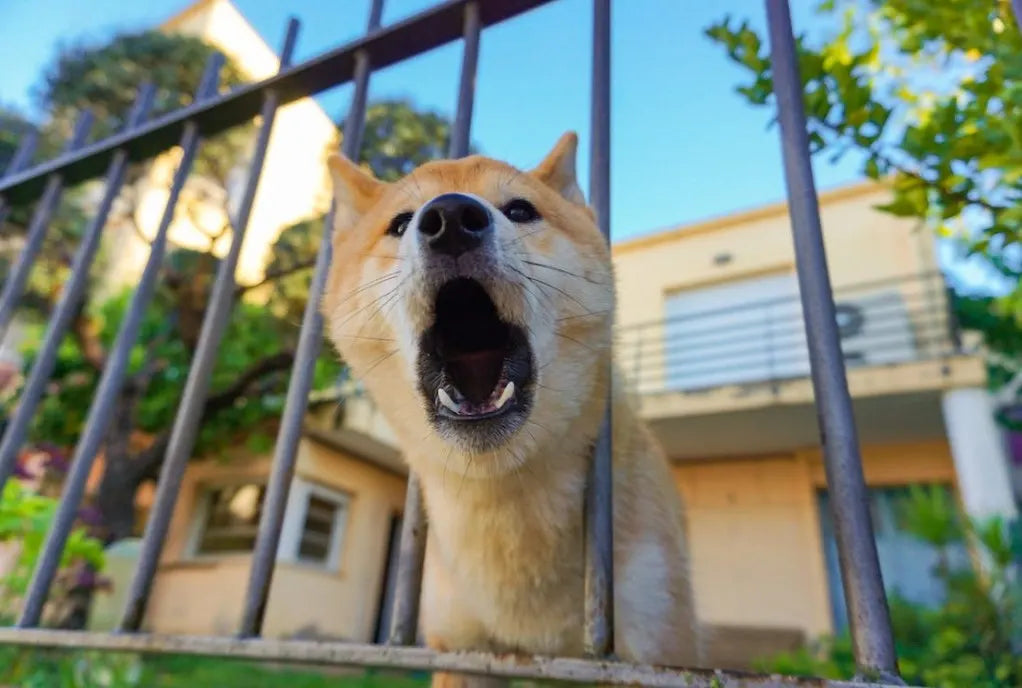How to Control a Dominant Dog

How to Control a Dominant Dog
Growling, barking, and territorial pulling on the leash… It can be embarrassing (and downright frustrating) to live with a dominant dog, can’t it?
At Bark & Beyond, we know that NO dog is a bad dog! Sure, controlling a dominant dog can present unique challenges, but with the right techniques and approach, anyone can learn how to foster a loving and harmonious relationship with their four-legged friend. Understanding canine behavior and implementing effective strategies will help pet parents navigate this journey successfully.
So, let’s explore 5 essential keys to controlling a dominant dog – with a focus on positive reinforcement.
1. Establish Yourself as the Pack Leader Remember, dogs are pack animals. They seek leadership and structure within their family. To gain your dog's respect and trust, establish yourself as the pack leader. Show confidence, consistency, and set clear boundaries through positive reinforcement like praise. Preventive Vet urges people to avoid harsh punishment, as it can backfire and lead to fear and aggression.
2. Above all, be consistent.
Consistency is vital in any dog training program. Regular training sessions will help your dominant dog understand expectations clearly. Use positive reinforcement techniques, rewarding desired behaviors again and again until it feels “normal” for your pooch. Consistency reinforces positive habits and diminishes dominant tendencies over time.
It’s a win-win!
Not sure if your dog is just playing vs. being dominant?
The American Kennel Club suggests watching out for the following signs:
- Biting (hard enough to be painful)
- Jumping
- Guarding food / toys
- Pinning down for extended periods of time
- Stubbornness
- Aggressive response to the word “no,” “stop,” or “down”
3. Implement Crate Training Third, get a good crate. Bark & Beyond carries a wide range of crates for small, medium, and large dogs. Crate training is a valuable tool for managing a dominant dog's behavior. The crate offers a secure space, creating a sense of den-like security. Introduce the crate gradually, making it a happy experience with yummy treats and toys. Never use the crate as punishment! It should be a place of rest and relaxation.
4. Socialization is Key Does you doggy have fur friends? Socialization is essential for any dog, but particularly for a dominant one. Expose your dog to different people, animals, and environments during puppyhood.
Controlled interactions help to:
• Develop appropriate social skills
• Reduce anxiety
• Minimize stress
• Ward off potential aggression.
Always supervise interactions (and be ready to intervene if necessary).
As dog trainers from K9 of Mine point out, “Aggression doesn’t always come from a lack of socialization, but under socialized dogs are at increased risk of aggression.”
5. Reward-Based Training Treats Lastly, training treats play a significant role. Promptly reward your dog with treats they find enticing when they display desired behavior.
Use small, soft, and easily digestible treats during training to maintain focus and enthusiasm. Treats should be a motivational tool, not the primary source of affection.
Our favs include:
• Bacon and Apple Flavor training treats
• Power Bite Rabbit soft and chewy treats
Navigating Life with a Dominant Dog Made Easy Hopefully, you feel more prepared now! Handling a dominant dog requires patience, understanding, and consistent training. Luckily, they’ve got you – their loving owner – to help them every step of the way.
